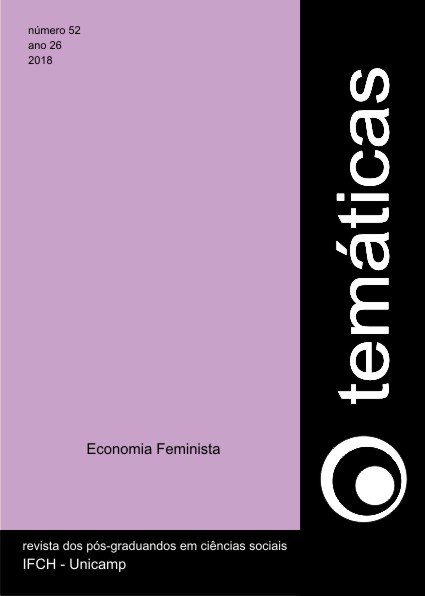Abstract
By detailing the capitalist features of domestic work, this article proposes an important move in the analytical (and political) perspective on the interactions between family and the labor market. The study is focused on four fronts: i) a statistical analysis on the distribution of time between men and women dedicated to domestic work in Italy and France in the late 1980s; ii) a confrontation on the neoclassical assumptions in Gary Becker’s perspectives on family; iii) a questioning of the political potential of working women that is only related to paid work, neutralizing domestic work and iv) an approach of the State as the institution responsible for regulating the relation between the process of accumulation and the process of social reproduction, arguing that domestic work is the link between production and reproduction that sustains the process of capital accumulation. In the author’s study of a capitalist system, the exploitation of work for reproduction and the control of women are crucial, once they all but guarantee both the quantity and the quality of labor necessary to accumulation. It is also stemming from the matter of reproduction that one can understand social, class, and gender conflicts in all their forms, the role of the State, and the constitution of women as political subjects.
References
BALBO, L. Crazy Quilts: Rethinking the Welfare State Debate from a Woman’s Point of View. In: Showstack Sasson, ed. Women and the State. London, Hutchinson, 1987.
BECKER, G. An Economic Analysis of Fertility. In: Demographic and Economic Change in Developed Countries. NBER, Princeton, Princeton University Press, 1960.
BECKER, G. A Treatise on the Family. Cambridge, Harvard University Press, 1981.
BECKER, G. Family. In: EATWELL, J.; MILGATE, M. & NEWMAN, P., eds. The New Palgrave Dictionary of Political Economy. London, Macmillan, 1987.
BEECHEY, V. & PERKINS, T. Women, Part-Time Work and the Labour Market. Cambridge, Polity Press, 1987.
BRAIDOTTI, R. Patterns of Dissonance. Cambridge, Polity Press, 1991.BROCAS, et. al. Women and Social Security, Geneva, ILO, 1990.
BRYDON, L. & CHANT, S. Women in the Third World: Gender Issues in Rural and Urban Areas. Aldershot, Edward Elgar, 1989.
DALLA COSTA, M. & JAMES, S., The Power of Women and the Subversion of the Community. Bristo, Falling Wall Press, 1972.
DEERE, C. D. Rural Women ́s Subsistence Production in the Capitalist Periphery. In Review of Radical Political Economy, vol. 8, p. 9-17, 1976.
DONINI, E. La nube e il limite, donne, scienza, percorsi nel tempo. Turin, Rosenberg and Sellier, 1990.
EUROSTAT. Employment and Unemployment. Brussels, EEC, 1989.
FADIGA ZANATTA, A. L. Donne e lavoro. In: ISTAT, Associazione Italiana di Sociologia, Inmagini della Societa’ Italiana, Rome, ISTAT, 1988.

This work is licensed under a Creative Commons Attribution-NonCommercial-ShareAlike 4.0 International License.
Copyright (c) 2018 Antonella Picchio

